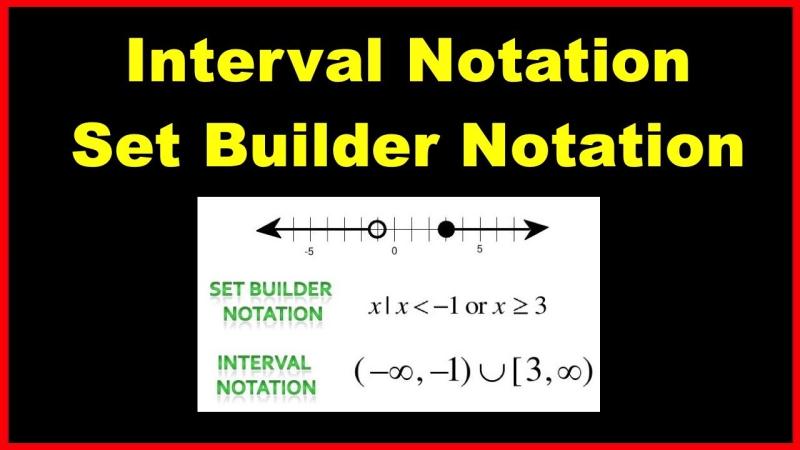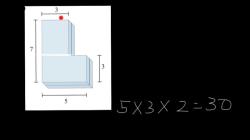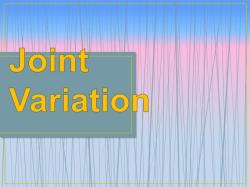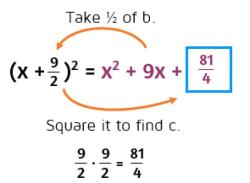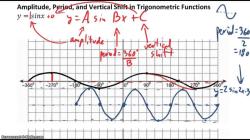Is set notation better than interval notation?
Set notation and interval notation are two distinct ways of representing mathematical sets, especially those of real numbers. Each notation has its own advantages and is often used in specific contexts. It's not accurate to say that one notation is universally "better" than the other, as their utility depends on the mathematical context and the information you want to convey.
Set Notation:
Representation: In set notation, sets are represented using curly braces {}. For example, the set of all real numbers between -1 and 1 (inclusive) can be denoted as .
Advantages:
- Suitable for representing discrete values and individual elements.
- More flexible for specifying complex conditions or properties.
Interval Notation:
Representation: In interval notation, sets are represented using brackets and parentheses. For example, the same set of real numbers between -1 and 1 (inclusive) can be denoted as .
Advantages:
- More concise for representing continuous ranges.
- Convenient for denoting intervals on the real number line.
When to Use Each:
Discrete Values:
- If you are dealing with a set of discrete values or need to express specific elements, set notation might be more appropriate.
Continuous Ranges:
- If you are representing continuous ranges, especially on the real number line, interval notation is often more concise and convenient.
Complex Conditions:
- If your set involves complex conditions or properties, set notation may be more expressive.
Consistency in Context:
- It's common to use interval notation when dealing with intervals and set notation when working with sets of distinct elements. However, it's crucial to be consistent within a given context.
Example:
Consider the set of all real numbers greater than -2 and less than or equal to 3.
- Set Notation:
- Interval Notation:
In this case, both notations effectively convey the same information, but the choice may depend on the specific requirements of the mathematical context or personal preference.
In conclusion, the choice between set notation and interval notation depends on the mathematical context and the specific information you want to convey. It's essential to be familiar with both notations and use them appropriately based on the nature of the sets or intervals you are representing.
Is set notation preferable over interval notation?
Both set notation and interval notation are valid and useful ways to represent sets of numbers. However, there are some situations where one notation is preferable over the other.
In general, set notation is more versatile than interval notation. It can be used to represent a wider variety of sets, including sets with gaps, sets with infinitely many elements, and sets that are not defined by specific endpoints. Set notation is also more concise and easier to read for complex sets.
However, interval notation is more intuitive and easier to use for simple sets of real numbers. It is also more convenient for expressing sets that are defined by specific endpoints.
Are there advantages or disadvantages to using set notation compared to interval notation?
Advantages of set notation:
- More versatile: Can represent a wider variety of sets
- More concise: Can represent complex sets more compactly
- Easier to read: Can be easier to understand for complex sets
Advantages of interval notation:
- More intuitive: Easier to understand for simple sets
- Easier to use: More convenient for expressing sets with specific endpoints
Disadvantages of set notation:
- Less intuitive: Can be harder to understand for simple sets
- Less convenient: Can be more cumbersome for expressing sets with specific endpoints
Disadvantages of interval notation:
- Less versatile: Cannot represent a wide variety of sets
- Less concise: Can be less compact for expressing complex sets
- Harder to read: Can be harder to understand for complex sets
How does set notation differ in conveying mathematical solutions compared to interval notation?
Set notation and interval notation can be used to convey mathematical solutions in different ways. Set notation is often used to define sets of solutions, while interval notation is often used to express the range of values that a variable can take on.
For example, the set notation {x ∈ R | x > 2} can be used to define the set of all real numbers that are greater than 2. This set can also be expressed using interval notation as (2, ∞).
In general, set notation is more precise and formal than interval notation. It is often used in proofs and other mathematical contexts where it is important to be clear about the exact definition of a set. Interval notation is more informal and intuitive. It is often used in more informal contexts where it is more important to convey the general idea of a set than to be precise about its exact definition.
Ultimately, the choice of which notation to use depends on the specific context and the desired level of precision.
Is set notation preferable over interval notation?
Both set notation and interval notation are valid and useful ways to represent sets of numbers. However, there are some situations where one notation is preferable over the other.
In general, set notation is more versatile than interval notation. It can be used to represent a wider variety of sets, including sets with gaps, sets with infinitely many elements, and sets that are not defined by specific endpoints. Set notation is also more concise and easier to read for complex sets.
However, interval notation is more intuitive and easier to use for simple sets of real numbers. It is also more convenient for expressing sets that are defined by specific endpoints.
Are there advantages or disadvantages to using set notation compared to interval notation?
Advantages of set notation:
- More versatile: Can represent a wider variety of sets
- More concise: Can represent complex sets more compactly
- Easier to read: Can be easier to understand for complex sets
Advantages of interval notation:
- More intuitive: Easier to understand for simple sets
- Easier to use: More convenient for expressing sets with specific endpoints
Disadvantages of set notation:
- Less intuitive: Can be harder to understand for simple sets
- Less convenient: Can be more cumbersome for expressing sets with specific endpoints
Disadvantages of interval notation:
- Less versatile: Cannot represent a wide variety of sets
- Less concise: Can be less compact for expressing complex sets
- Harder to read: Can be harder to understand for complex sets
How does set notation differ in conveying mathematical solutions compared to interval notation?
Set notation and interval notation can be used to convey mathematical solutions in different ways. Set notation is often used to define sets of solutions, while interval notation is often used to express the range of values that a variable can take on.
For example, the set notation {x ∈ R | x > 2} can be used to define the set of all real numbers that are greater than 2. This set can also be expressed using interval notation as (2, ∞).
In general, set notation is more precise and formal than interval notation. It is often used in proofs and other mathematical contexts where it is important to be clear about the exact definition of a set. Interval notation is more informal and intuitive. It is often used in more informal contexts where it is more important to convey the general idea of a set than to be precise about its exact definition.
Ultimately, the choice of which notation to use depends on the specific context and the desired level of precision.
